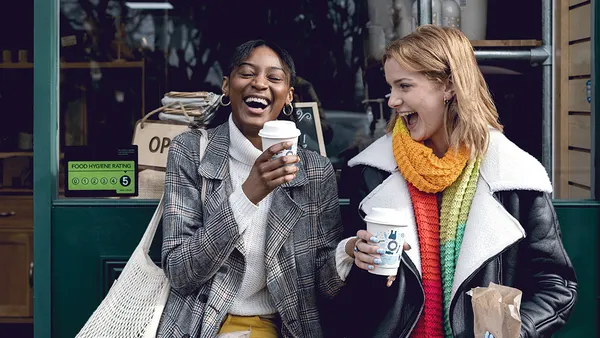Editor's Note: This opinion column was written by Denise Dahlhoff, research director of the Wharton School's Baker Retailing Center at the University of Pennsylvania. The Baker Retailing Center facilitates academic-industry interactions and funds retail-related Wharton School PhD research. Views are the author's own.
Digital technologies — from smartphones to social media to Amazon — have forever changed consumers' shopping behavior and daily routines.
Wharton School research highlights some of the less obvious, indirect consequences of the new digital ways to shop and consume. These so-called spillover or ripple effects include that shoppers change their paths in the offline world, causing a shift in where and on what products they spend their money. These effects suggest new opportunities for retailers while also making location decisions more complex.
With Uber, Lyft & Co. in town, "location, location, location" can be off the beaten track
Uber and Lyft have not only impacted our urban environment by adding traffic to streets and getting designated curbspace, but they are also making urban areas away from central public transit hubs more accessible, thus opening up new, more affordable location options for retailers.
Restaurants have set a precedence in locating themselves off the beaten track, driven by Uber's presence, according to a study by Wharton Ph.D student Caitlin Gorback. Using 2012 to 2016 data from 34 U.S. cities, Gorback found that after the entry of UberX, neighborhoods that are less accessible by public transportation experienced a 6% higher annual growth rate in the number of restaurants than central neighborhoods. This growth couldn't be attributed to general growth trends such as the influx of Millennials and rising levels of services in the studied zip codes (for example, the number of dentist offices didn't grow).
Up-and-coming neighborhoods could be a promising alternative for certain types of retailers as well, especially those whose business focuses on experiential consumption such as novel fashion, beauty or furniture stores, spas, and hair stylists. The "funky" location can add to the experience and it has "social currency." Out-of-the-way locations could potentially also work in combination with delivery or pick-up options, including for necessity-type businesses such as grocers and dry cleaners.
Online grocery shoppers reorganize their offline routes, benefiting local coffee shops
Online shopping doesn't just impact physical stores of direct competitors but also stores in seemingly unrelated product categories. This is what a study by Lindsay Relihan, assistant professor of real estate economics and finance at the London School of Economics and a recent Wharton PhD graduate, discovered. Using 2012 to 2017 credit and debit card data from 4.5 million customers, she found a to-be-expected negative effect of online grocery shopping on offline grocery stores but also a positive effect on local coffee shops: Coffee shops experienced a 7.6% increase in revenues from online grocery shoppers, driven by more visits, especially during the week.
Compared to offline grocery shoppers, high-use early adopters of online grocery shopping in the study's 15 large U.S. cities reduced their spending at physical grocery stores (by 18% in the first month and 4.5% over two years), driven by fewer store trips, especially on weekdays. Interestingly, shoppers' new spend on online grocery sites was higher than their reduction in offline grocery dollars, indicating that online grocery platforms might also cannibalize offline retailers with overlapping assortments such as restaurants and drugstores.
Given these ripple effects on non-competing businesses, how might consumers' digital behavior influence their offline tracks and impact other businesses in the physical world, including restaurants, gyms, spas, banks, and doctor's offices? This is important for any consumer-facing business to consider in order to determine the ideal locations of offline interaction points.
New data-based approach to plan optimal store locations and hours
Determining the optimal location network, along with opening hours, was the objective of empirical research by Wharton Ph.D student Chloe Kim Glaeser and Wharton professors Marshall Fisher and Xuanming Su. The study uses data from an online retailer with mobile, truck-based pick-up locations with limited hours, a business where convenient locations that let customers easily integrate pick-ups into their offline routes, are crucial.
The analysis incorporated 200+ variables representing demographic, economic and other information such as competitors' locations and surrounding businesses, as well as the retailer's historical sales and operations data.
It found that improving the pick-up location map and operating schedule could enhance revenues by at least 42%. Adding more locations in well-performing areas turned out to be better than expanding to new areas. When the retailer used the recommendations to add new pick-up locations, the performance of the best new locations was in line with the ranking predicted by the research.
The research suggests a new blueprint for retailers to plan locations and operating hours, utilizing actual data to estimate location-dependent demand and cannibalization by other locations and hours. It's useful for any retailer with many locations or expansion plans, where cannibalization can be an issue, as well as to plan locations of pick-up lockers and car and bike sharing stations


















